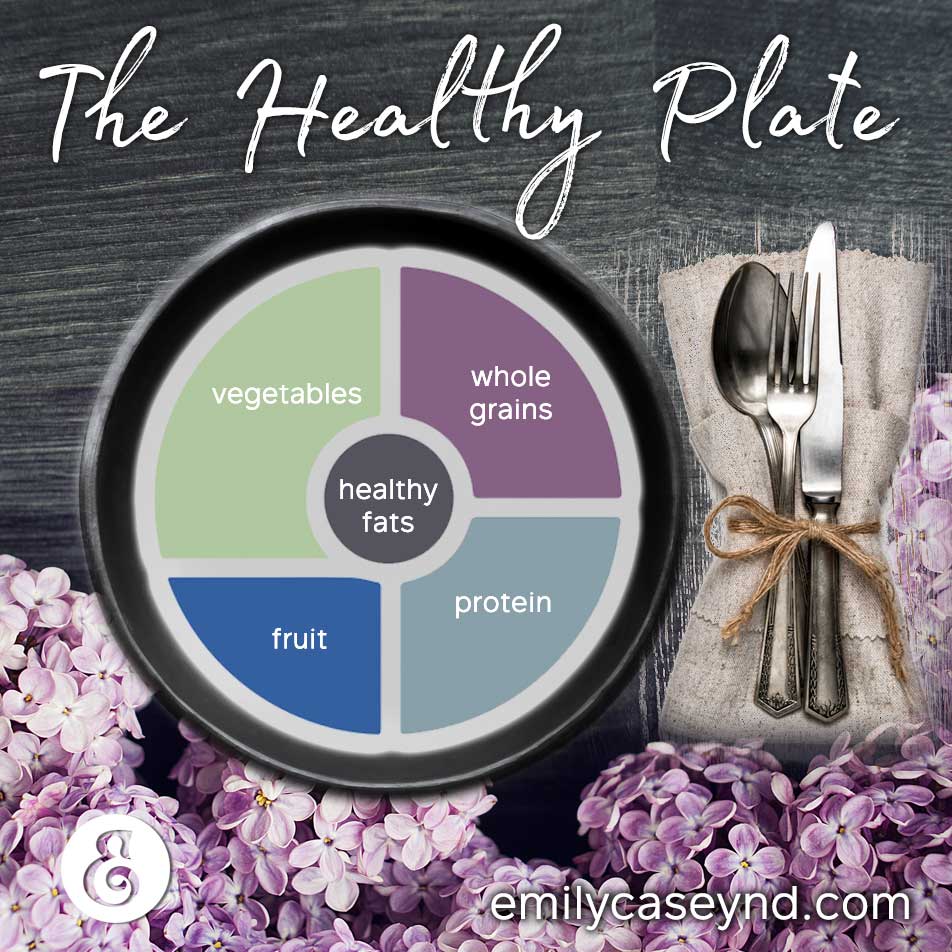01 Apr Asparagus, Arugula & April
I’m excited to talk to you about fruits and vegetables this month! In Canada, we need to focus on increasing our intake of fresh fruits and vegetables in the spring, summer, and fall months, as it can be a struggle to access them in the winter months. We all know that “April showers bring May flowers” and this is true for fruits and veggies too! This is why I chose fruits and vegetables as my April topic. It is the perfect time to increase your intake as all the local spring produce starts to grow. What are your favourite spring produce options?
Spring is also the perfect time to detoxify our bodies after a long winter of eating high fat and high carbohydrate foods, and exercising less than normal. Eating more vegetables is one great way to detox. In this post, I’ll talk about a safe, gentle, and healthy detox plan and why spring is the perfect time of year for it!
Let’s start with what your goals should be in terms of quantity of fruits and vegetables in each of your meals and throughout the day.
The Healthy Plate
The Healthy Plate is my favourite way to discuss healthy eating. If you’re a patient of mine, you’ve likely heard me talk about the healthy plate! I love it because it is an easy way for my patients to remember to focus on eating more fruits and vegetables without worrying about counting out serving sizes. As you can see, fruits and vegetables combined should take up half of your plate! Is this what your plate looks like? For many of you, I bet fruits and veggies take up a quarter of the plate and grains/carbohydrates are half of the plate. An easy way to start eating healthier is to change this ratio!
The healthy plate recommends eating slightly more vegetables compared to fruit. This is partly due to the sugar content in fruit. Vegetables give you a higher nutrient content with lower sugar amounts and therefore, less of an effect on your blood sugar.
Are you concerned that you won’t feel full enough if you eat a higher percentage of vegetables compared to carbohydrates? Interestingly, if you look at the satiety index, or how well different foods satisfy your hunger, fruits, vegetables, and lean meats are higher (meaning they satisfy your hunger more effectively) than foods high in carbohydrates, fats, and sugar. The fibre content makes you feel full even though you’re ingesting fewer calories!
Serving Sizes
If you’re very focused on serving sizes, you can use the Canada Food Guide recommendations:
- Children 2-13 yo: 4-6 servings.
- Teens 14-18 yo: 7-8 servings.
- Adults 19-50 yo: 7-10 servings.
- Adults 51+ yo: 7 servings.
You may have seen this recent global news article discussing a study that shows eating 10 servings of fruits and vegetables a day will help you live longer. That’s a great goal to work towards! Unfortunately, most Canadians aren’t meeting this goal. A 2014 survey showed that only 39.5% of Canadians report eating more than 5 servings of vegetables/day. What’s your number?
Here is a simple guide showing you what one serving looks like for a variety of fruits and vegetables. Some examples of 1 serving size are: 6 spears of asparagus, 1 medium apple, ½ an avocado, or ½ a cup of berries. To get 10 servings per day, you need to be eating about 2-3 servings per meal plus 2-3 servings for snacks or dessert. I believe you can do it!
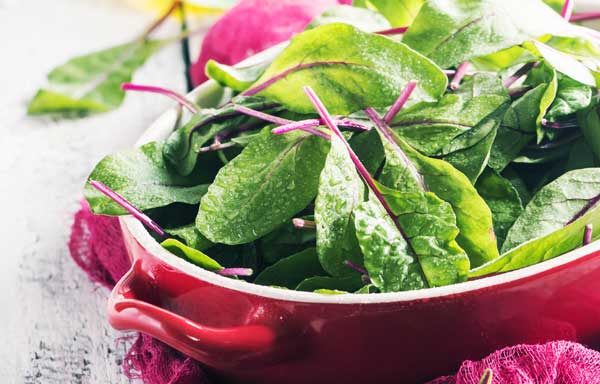
Vegetables are full of nutrients!
Two common worries I hear from many patients are: How will I get enough calcium if I don’t eat dairy? How can I get more iron if I lower my meat intake? The answer: vegetables!! Vegetables are high in many nutrients, including calcium, iron, vitamin C, vitamin A, beta-carotene, vitamin K, potassium, and magnesium. The best way to benefit from all of these nutrients is to eat a variety of the different colours of fruits and vegetables. Fruits and vegetables are nutrition powerhouses and the reds, greens, purples, oranges, and yellows all have different benefits.
Calcium
Collard greens, bok choy, spinach, and broccoli are all high in calcium. Calcium is also found in tahini/sesame seeds, almonds, and canned fish with bones. There is no reason to believe that these sources are any less well absorbed than dairy sources of calcium. Getting enough vitamin D and physical activity is most important when it comes to proper calcium absorption and bone health!
Iron
Iron is high in spinach, tomato purree, dried apricots, and legumes. Plant-based sources of iron are in the non-heme form (compared to the heme form, found in animal products). The body less efficiently absorbs the non-heme form but it is still completely possible to get the recommended daily amount of iron from plant-based sources. Add some extra vitamin C to your meal to help absorb the non-heme iron sources.

Vegetables are the best when in season
You will get the most delicious and most nutritious fruits and vegetables by eating your local produce! Less travel is optimal for great tasting produce, as well as lower priced produce. The further it has to travel and the more out of season it is, the more likely you’ll be paying very high prices for it. Check out this great website to find out what’s in season in Ontario.
- Spring: asparagus, rhubarb, lettuce, beets, beans.
- Summer: tomatoes, berries, peppers, peaches, corn, broccoli, cauliflower, AND SO MANY MORE!
- Fall: squash, apples, potatoes, pumpkins, pears.
Obviously, here in Canada, we struggle more with winter produce. I highly recommend frozen fruits and vegetables in the winter. They are frozen when they are in season and are often still quite high in all their nutrients. Add frozen berries to smoothies or heat them up and serve them over oatmeal. Add frozen veggies to stews, shepherd’s pie, and casseroles. There are lots of fun options for making frozen fruits and vegetables work in your diet!
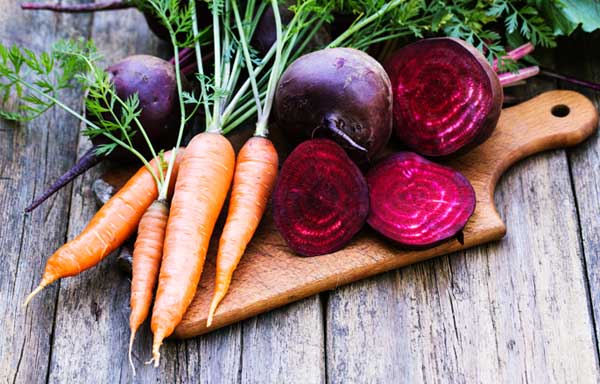
But my kids don’t like vegetables…
Then let’s work on finding ways to encourage them to like them! I understand that many kids are picky eaters but I believe that they can learn to eat vegetables. It is important for children to understand the importance of eating vegetables, see you eating them regularly, and learn more about where they come from and how to prepare them.
Tip #1: Start by hiding them.
It might be hard to convince your child to eat vegetables if they have created negative associations with them. Start by adding them to recipes in a sneaky way, with some added sugar to hide the flavour. Try these Banana Broccoli muffins, Zucchini Almond Butter Brownies, a kid-friendly Green Smoothie, or Chocolate Avocado Pudding.
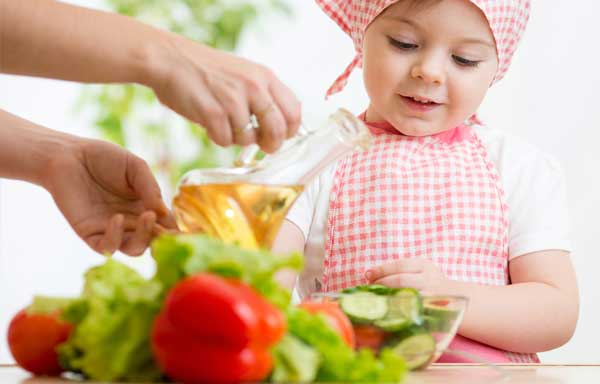
Tip #2: Involve your kids in shopping and cooking.
Take your kids to the grocery store or the farmers market and ask for their help in picking out vegetables. If they’re curious about a certain vegetable, embrace this curiosity. You can make it a fun activity to do together: buy it, research how to cook it, and prepare it together! You can also take your children to farms to see where vegetables grow, or try planting your own vegetable garden.
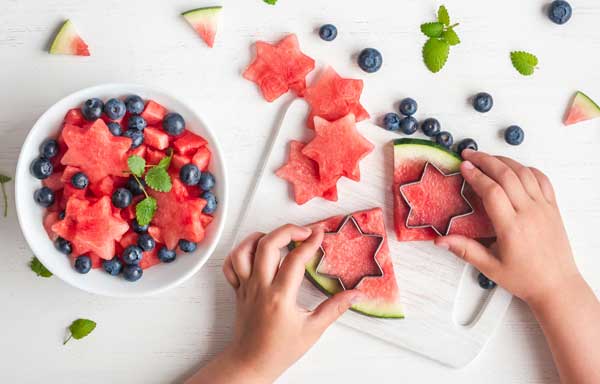
Tip #3: Be Creative and Don’t give up.
They say it takes us 10 tries before we like something. When we first try something, it is new and different and sometimes that is the only reason kids don’t like it. Once they try it a few times and realize it isn’t so weird, they might start to enjoy it. Another option is to try cooking vegetables in different ways. Maybe they don’t like raw carrots but they like them cooked with butter or cooked into a stew. The possibilities are endless!

April Goal
Take 10 deep breaths daily, add 2 extra cups of water to your normal intake, sweat once a day, and eat at least one meal each day that follows The Healthy Plate recommendations. As always, I encourage you to set your own goals too!
A Balanced Detox Approach
Detox means detoxifying your body of chemicals and toxins that are impeding your health and might be leading to symptoms of fatigue, bloating, headaches, hormonal issues, skin rashes, and many others. In our society, we are constantly exposed to toxins on a daily basis, which means it is no longer a question of whether you’re exposed but by how much. The best thing you can do is to ensure that all of your elimination pathways are functioning optimally! This allows your body to get rid of any chemicals or toxins after an exposure.
Elimination Pathways
We have four major elimination pathways: the digestive tract/liver, kidneys, skin, and lungs. For many people, detox programs make them feel much worse before they feel better. Commonly, this is because the detox program is focusing solely on the liver without supporting your elimination pathways. Before starting any detox program, make sure you are eliminating regularly and you’ll feel a million times better!
Spring = Detox Season
We spring clean our house so why not spring clean our health? Spring is a time of new beginnings and it is the perfect time to start a new healthy living plan. Also, from a traditional Chinese medicine perspective, spring is the time when the liver organ is the most active. This is just one of many reasons why the spring is a great time to support liver and detox function.
Year of Health Spring Detox
Lungs
Do at least 10 deep abdominal breaths daily. Fully inhale and fully exhale to release all the air and toxins from your lungs and respiratory system. This will also help with your emotions, which can be considered a fifth elimination pathway. Take this time to let go of anything that is causing you anger, sadness, frustration, stress, or any other negative emotions
Kidneys
Drink water! The exact amount of water that your body needs is difficult to quantify and likely different for each person. I generally recommend drinking at least 1 cup of water every couple of hours throughout the day. If you’re finding yourself feeling thirsty, you’ve gone too long without water. Use your urine colour as a marker; it should be light yellow in colour. If it gets too dark, drink more water! If you don’t like water, add lemon, lime, oranges, or other fruits to give it a nice flavour. Herbal teas can also be a water alternative.
Skin
Sweat as often as possible. Run, swim, do yoga, have sex, or take the stairs. Don’t be uncomfortable with the feeling of sweating! Remember it is just another way that your body is releasing anything that it doesn’t need anymore. Another option to help detoxify your skin and your lymphatic system (which sits just beneath your skin) is dry brushing.
Digestive tract
Eat lots of fibre! Dietary fibre adds bulk to your stool and improves bowel regularity (how often you poop!), which ensures you are eliminating toxins regularly. The best way to get enough dietary fibre is to follow the healthy plate guidelines! Eating half a plate of fruits and vegetables will give you many servings of dietary fibre, as will the quarter plate of whole grains. Many vegetables have added nutrients that will further support the liver and healthy detoxification. Specifically, the brassica/cabbage family of vegetables (cabbage, brussel sprouts, broccoli, kale, etc.) are well known for their ability to improve liver detoxification. Vegetables rich in vitamin C and other antioxidants are also important. You can gently detoxify your body every single day by eating the recommended servings of fruits and vegetables!


